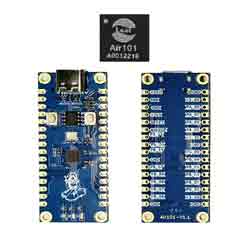- sales/support
Google Chat: zj734465502@gmail.com
- sales
+86-0755-88291180
- sales01
sales@spotpear.com
- sales02
dragon_manager@163.com
- support
tech-support@spotpear.com
- CEO-Complaints
zhoujie@spotpear.com
- sales/support
WhatsApp:13246739196
Setting up Jetson nano to boot the system from a USB Flash Disk
Introduction
Herein mainly introduces Jetson Nano modules with 16GB eMMC memory according to official nvidia tutorial. All information is subject to the official website of nvidia.
Reference Links
- https://developer.nvidia.com/embedded/learn/get-started-jetson-nano-devkit#write
- https://docs.nvidia.com/jetson/archives/l4t-archived/l4t-3261/index.html#page/Tegra%20Linux%20Driver%20Package%20Development%20Guide/flashing.html#wwpID0E01O0HA
Hardware Preparation
- Jetson Nano module, corresponding power supply and heatsink
- Ubuntu18.04 computer host
- U disk with USB interface or mobile hard disk (USB3,0 is recommended)
- a USB data cable (Micro USB interface, for transmitting data)
Software Preparation
- Install SDK Manager and flash system configuration for Jetson Nano.
- Tutorial: SDKM flash Nano
- Record the address of the downloaded HW Imager during the flashing process for later.

- Connect the U disk to the nano, and check the device number of it in the nano, such as sda.
ls /dev/sd*
- Insert the U disk to the ubuntu computer.
- Check the device number of the U disk on the computer, such as sdb.
sudo lsblk -p -d | grep sd
- Note: If your U disk has been partitioned before, it is recommended to format and adjust it to a partition on another computer first.
- Format the USB drive to ext4
sudo mkfs.ext4 /dev/sdb
- Note: Please refer to your actual situation for the specific device number. Some devices may be sda or others.
- Mount U disk
sudo mount /dev/sdb /mnt
- Enter the HW Imager address and copy the rootfs.
cd <path>/Linux_for_Tegra/rootfs/
- Note: Please refer to your actual address. For example, the author's path command:
cd/home/ubuntu/nvidia/nvidia_sdk/JetPack_4.6.1_Linux_JETSON_Nano_TARGETS/Linux_for_Tegra/rootfs/
- Copy the file system to the U disk.
sudo tar -cpf - * | ( cd /mnt/ ; sudo tar -xpf - )
- After finishing the copy, unmount the U disk, (note: don't pull it out).
sudo umount /mnt
- Set up nano as recovery mode (refer to the flashing tutorial), then connect it to the ubuntu computer and input the flashing command.
cd ../ csudo ./falsh.sh jetson-nano-emmc sda
- Note: Sda should be filled in as the actual device number of the U disk recognized by nano in the first step.
- After flashing, disconnect the nano and the U disk. Insert the U disk to the Nano before powering on it, and follow the prompts to complete the configuration.
TAG:
Raspberry Pi Autofocus Camera
Industrial USB TO RS232/485 (C) UART FT232RNL 2m For 3.3V / 5V For Switchable RS232/RS485
Milk-V Duo
Jetson Nano Expansion Board
NanoKVM-USB Quick Start
Raspberry Pi 5 Argon-NEO-M.2-NVME-PCIE-Expansion-Board Only For Argon NEO 5 Case (Not include)
RV1103
Industrial Isolated Converter
Raspberry Pi 5 RTC Battery
Raspberry Pi ZERO
Raspberry Pi Pico 2 RP2350 bit board Size & Port high Compatible With BBC Micro:bit
Raspberry Pi 5inch Display
Jetson Orin
Spotpear
Raspberry Pi
0.85inch Screen
Spotpear
MAX9296 GMSL Camera Adapter Board 2-Ch High-Speed And Low-Latency Transmission For Jetson Orin Nano/NX
3.4inch Round LCD HDMI Capacitive Touchscreen Display 800x800 For Raspberry Pi/Jetson Nano/mini PC
SPI Communication
TAG:
RS232 to RS485
Serial UART Magnetic Encoder Bus Servo ST3025 TTL 40KG.CM High Precision Large Torque
1.54 inch Passive NFC e-Paper BW Display E-ink Screen No Need Battery Wireless Powered
ESP32 C3 MINI TV LVGL Astronaut Clock Watch Buzzer 1.69inch LCD TouchScreen Display ST7789 240x280
Raspberry Pi 5 5V5A Power
Sipeed FPGA Tang Primer 20K Dock Lite 128M DDR3 GW2A-LV18PG256C8/I7
Raspberry Pi 1.5inch LCD
Arducam
mobile phone
PC USB Secondary Screen
Modbus RTU
Raspberry Pi Zero RJ45 HAT
Raspberry Pi 5
Raspberry Pi 5 8 inch DSI LCD Captive TouchScreen MIPI Display 1280x800
Sipeed Maix Bit RISC-V AI+lOT K210
Raspberry Pi 5
SpotPear
Raspberry Pi 5 PD Induction
Raspberry Pi 5 PoE HAT G Power over Ethernet 802.3af at
2.8inch Capacitive TouchScreen LCD Display ST7789 CST328 240x320 Arduino Raspberry Pi ESP32 Pico CST328




